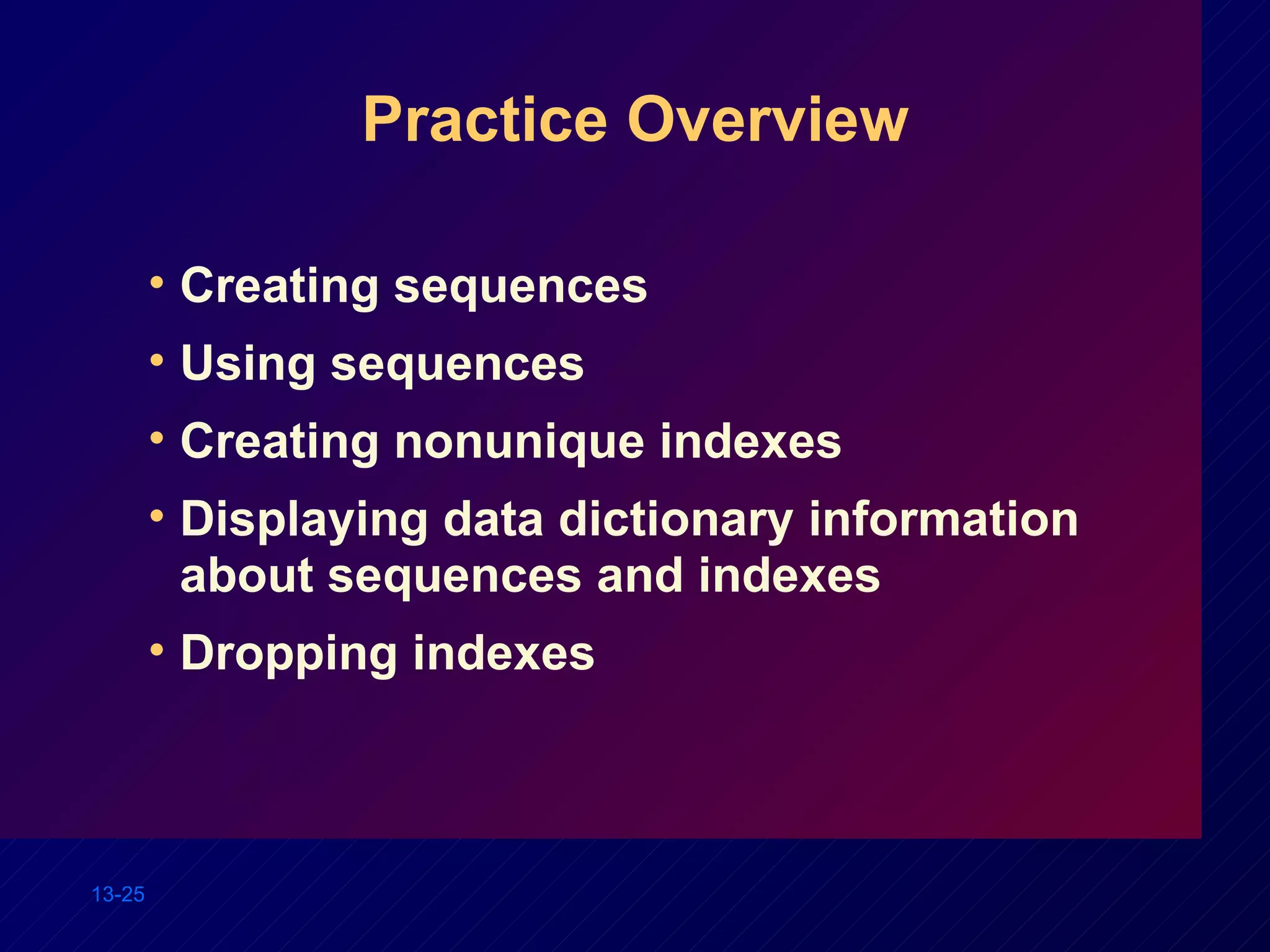This document describes various database objects like sequences, indexes, and synonyms. It explains that sequences are used to automatically generate primary keys and improve efficiency. Indexes speed up queries by indexing columns frequently used in WHERE clauses. Synonyms provide alternative names for objects to simplify access. The document provides examples of creating, modifying, viewing, and dropping these database objects using SQL statements.




![The CREATE SEQUENCE Statement Define a sequence to generate sequential numbers automatically. CREATE SEQUENCE sequence [INCREMENT BY n ] [START WITH n ] [{MAXVALUE n | NOMAXVALUE }] [{MINVALUE n | NOMINVALUE }] [{CYCLE | NOCYCLE }] [{CACHE n | NOCACHE}];](https://image.slidesharecdn.com/les13-111115074311-phpapp02/75/Les13-5-2048.jpg)
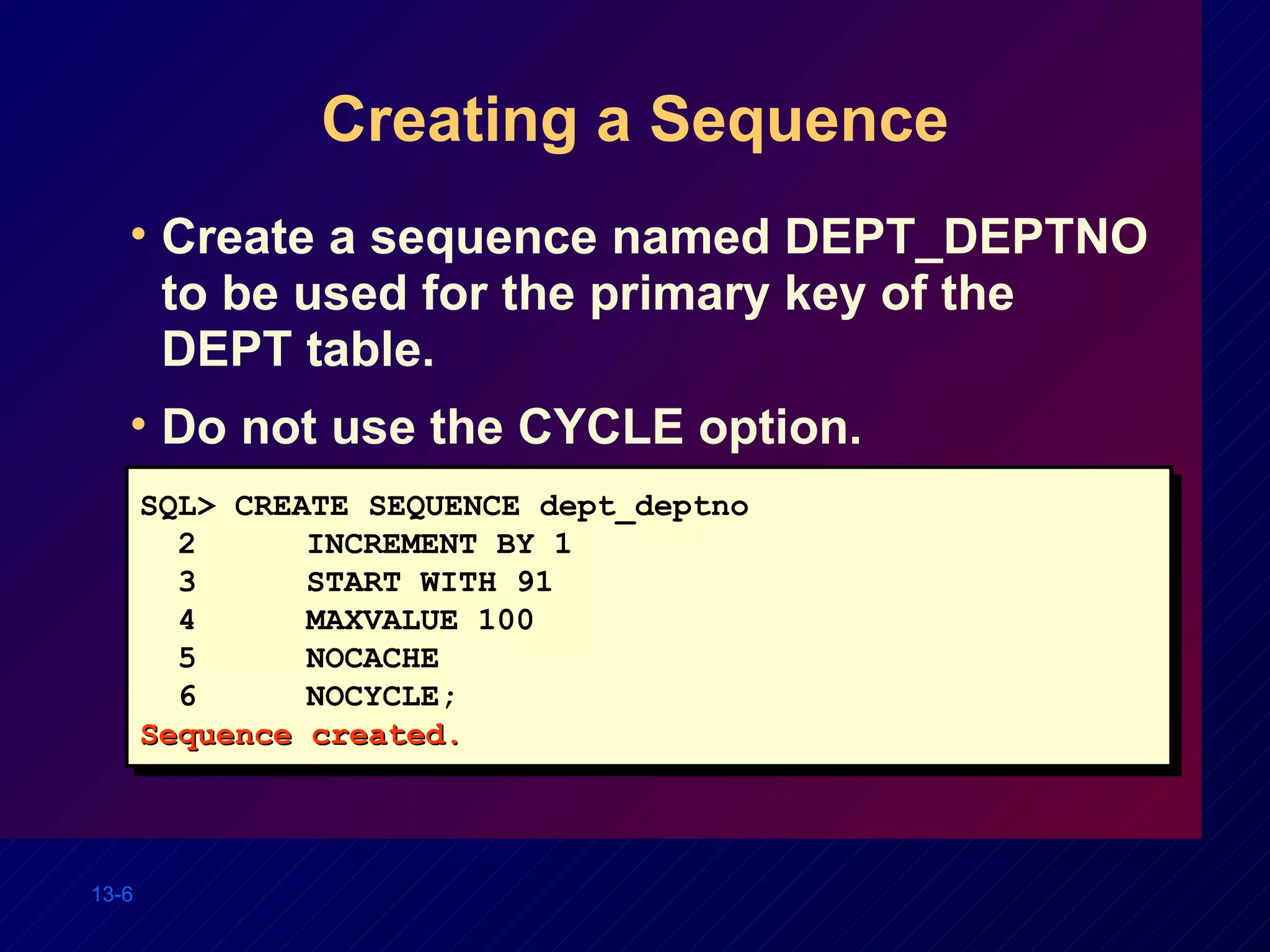

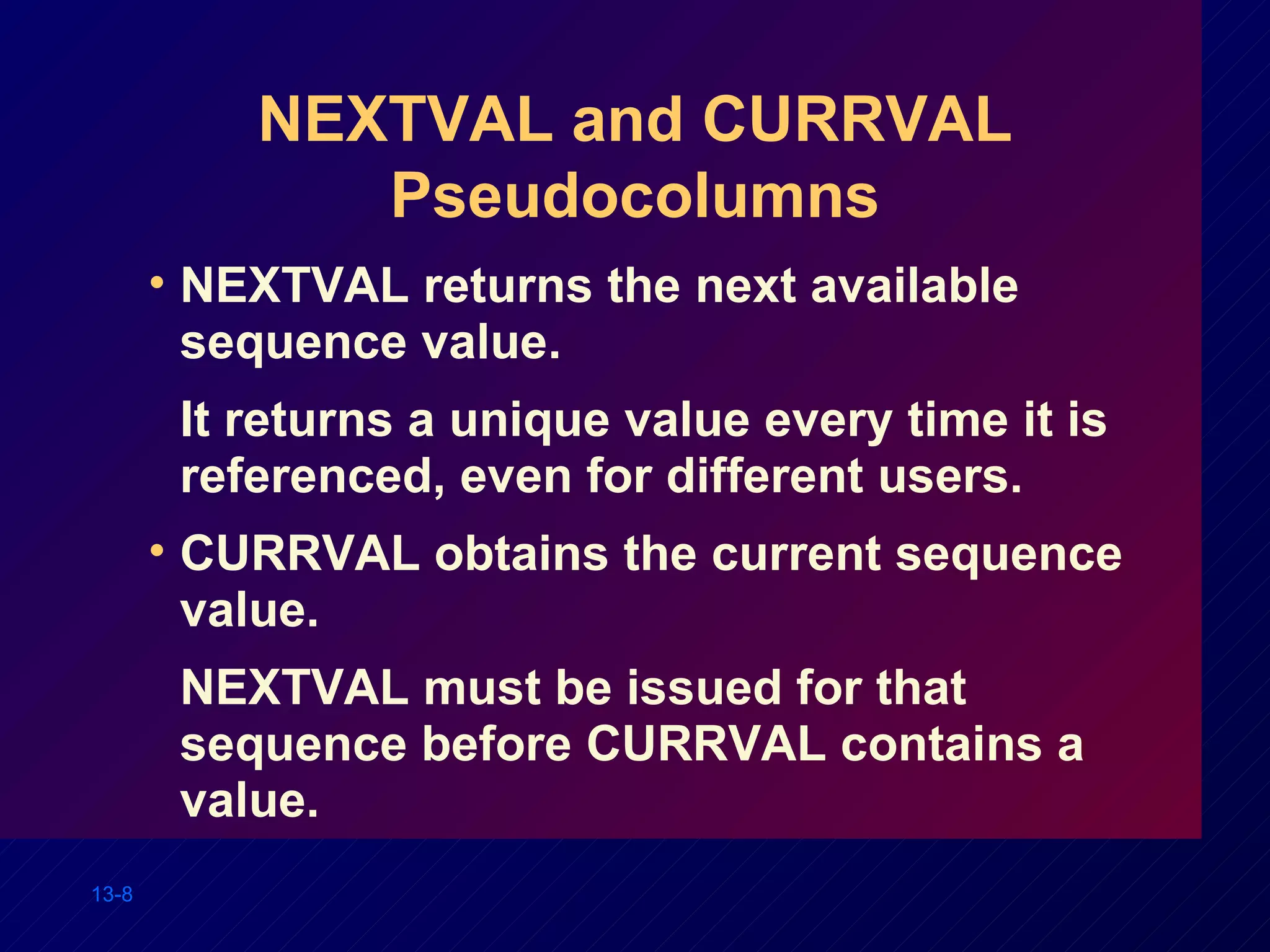
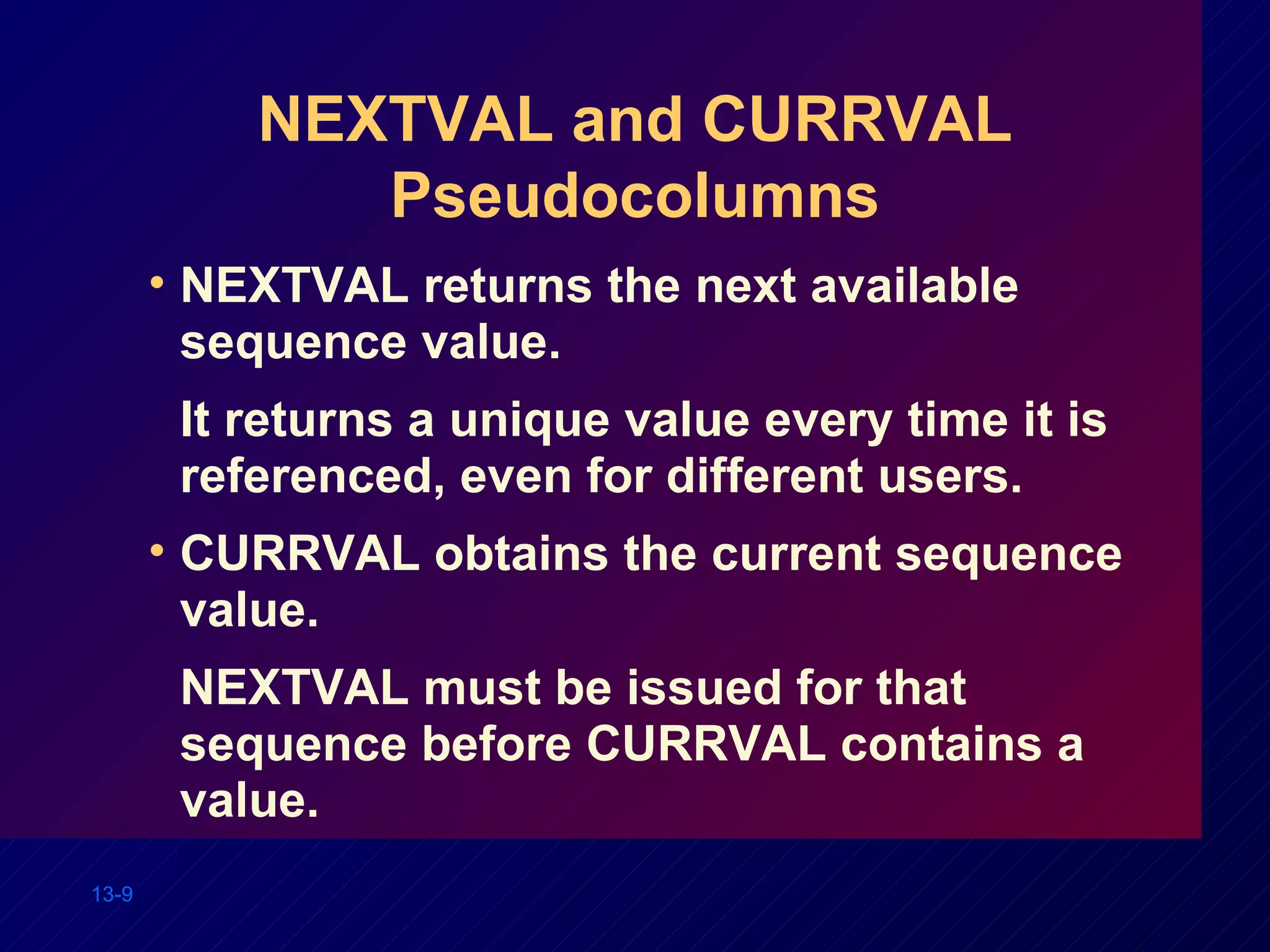
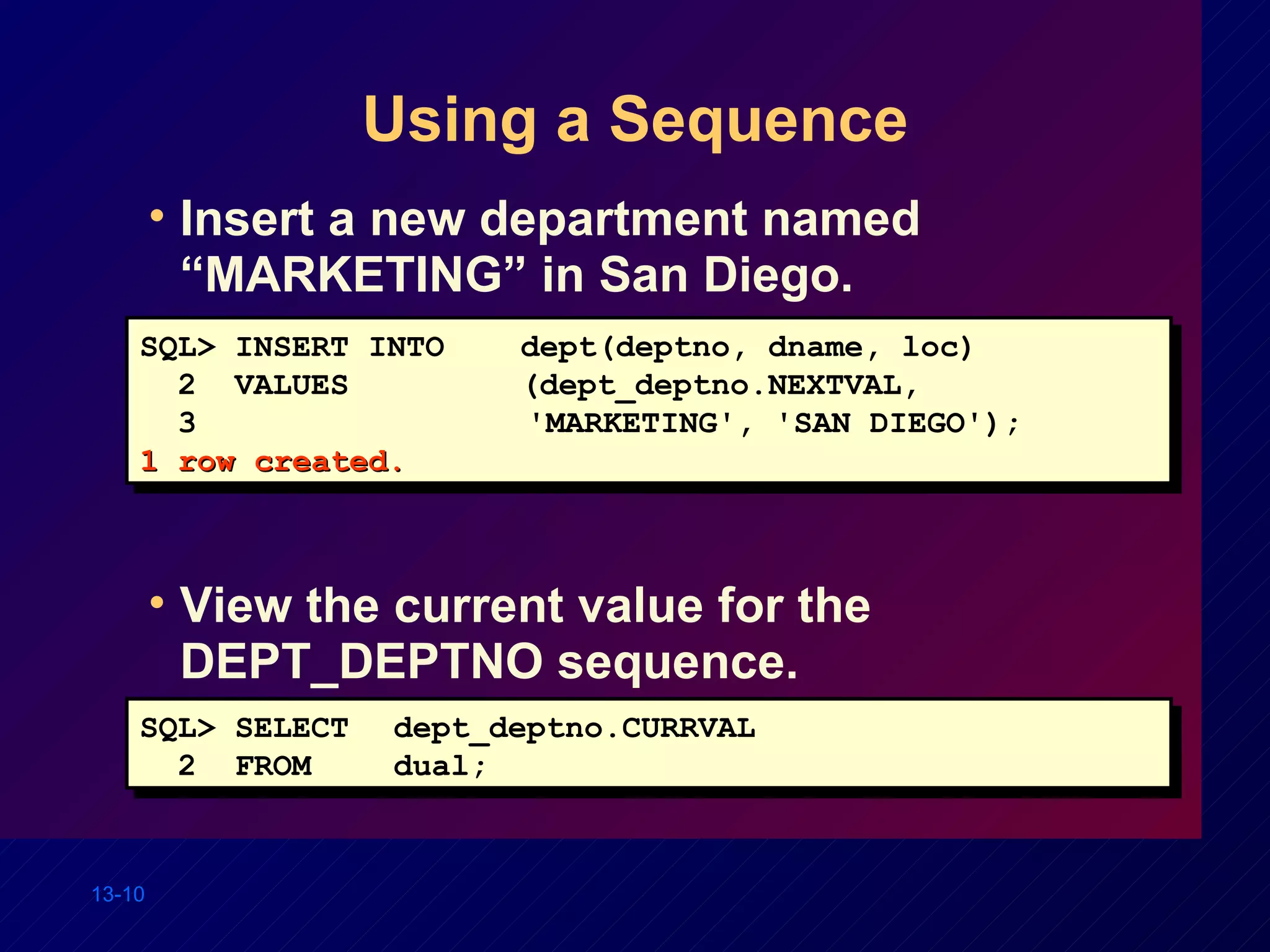
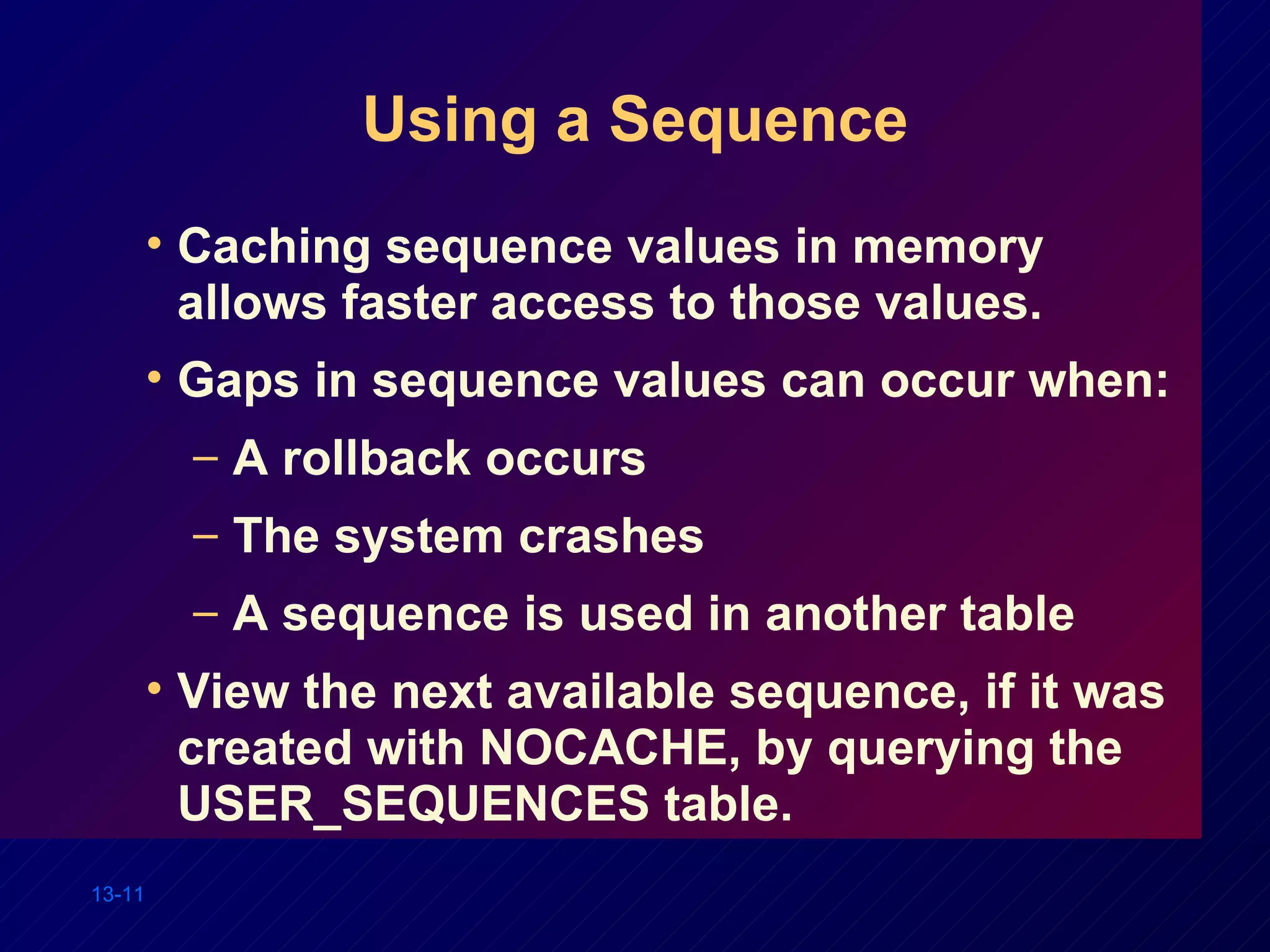
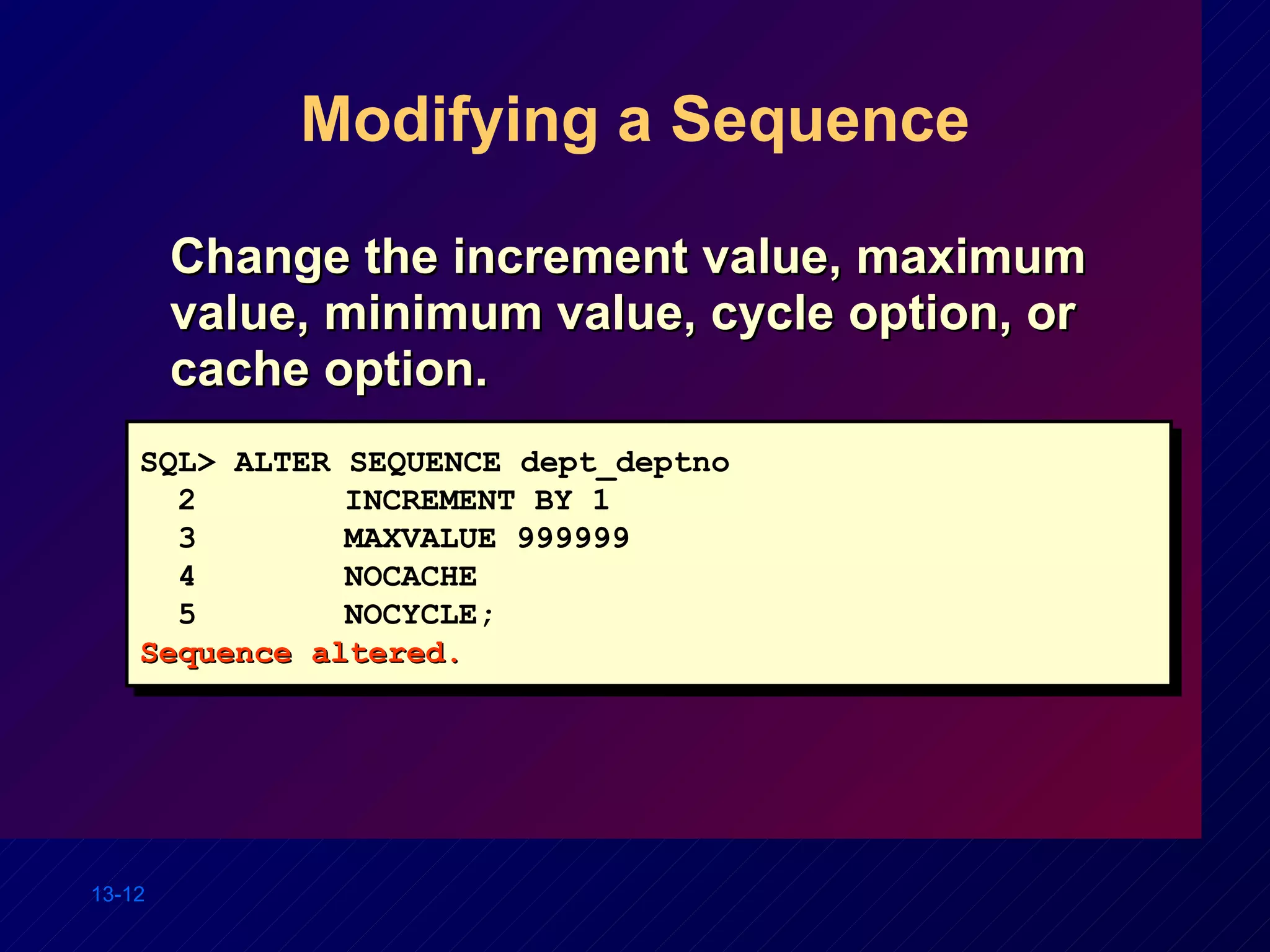
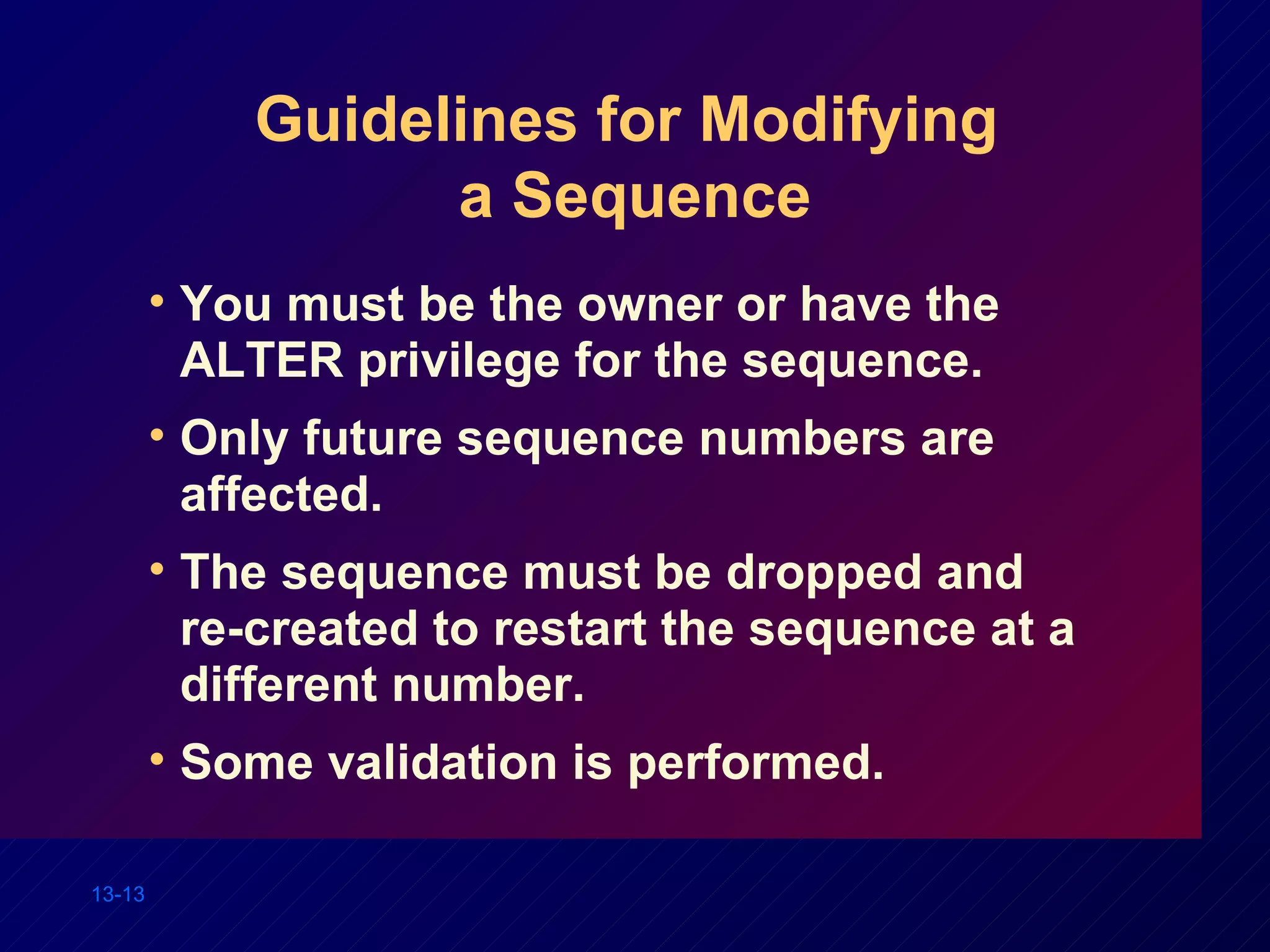
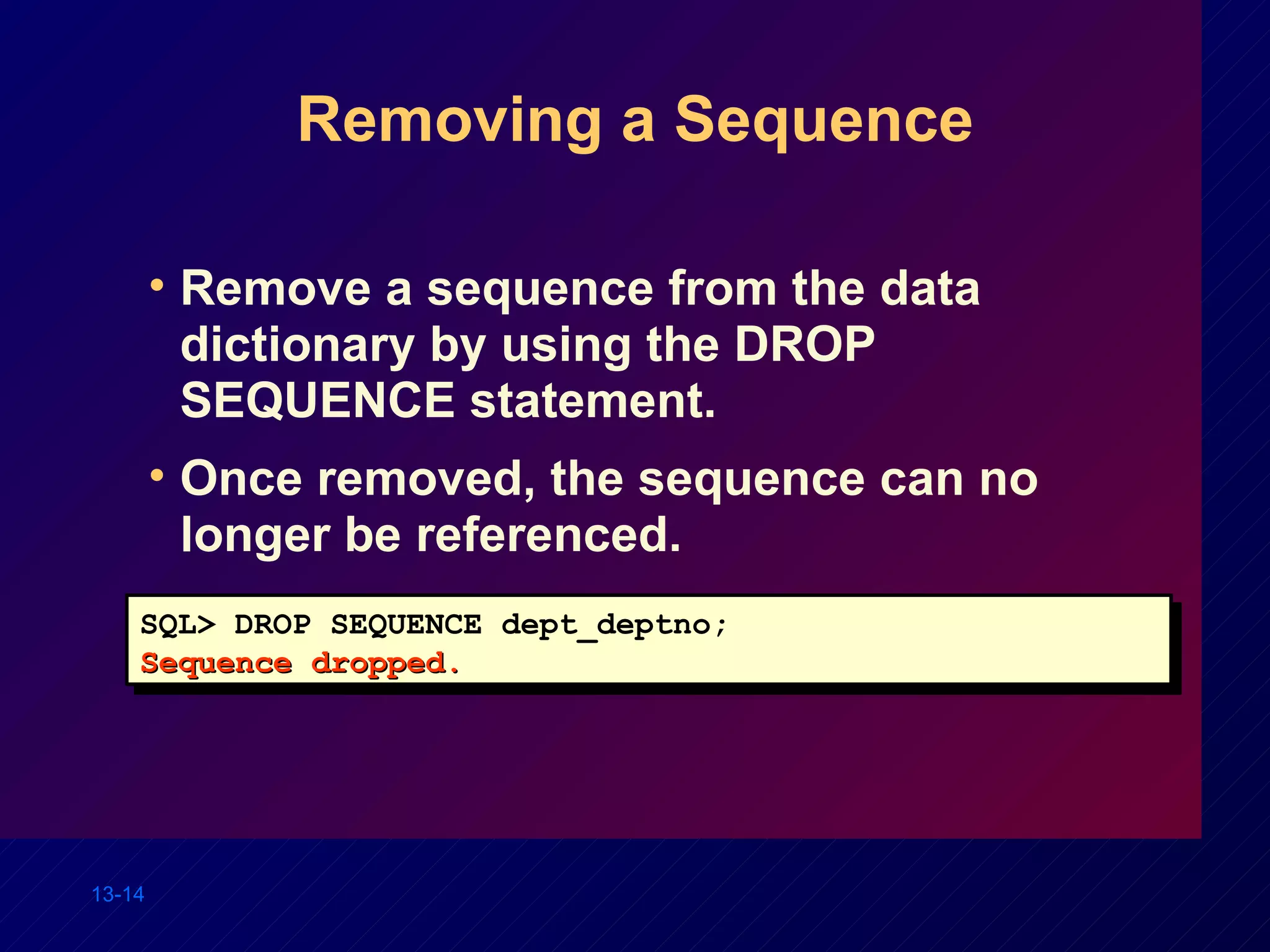

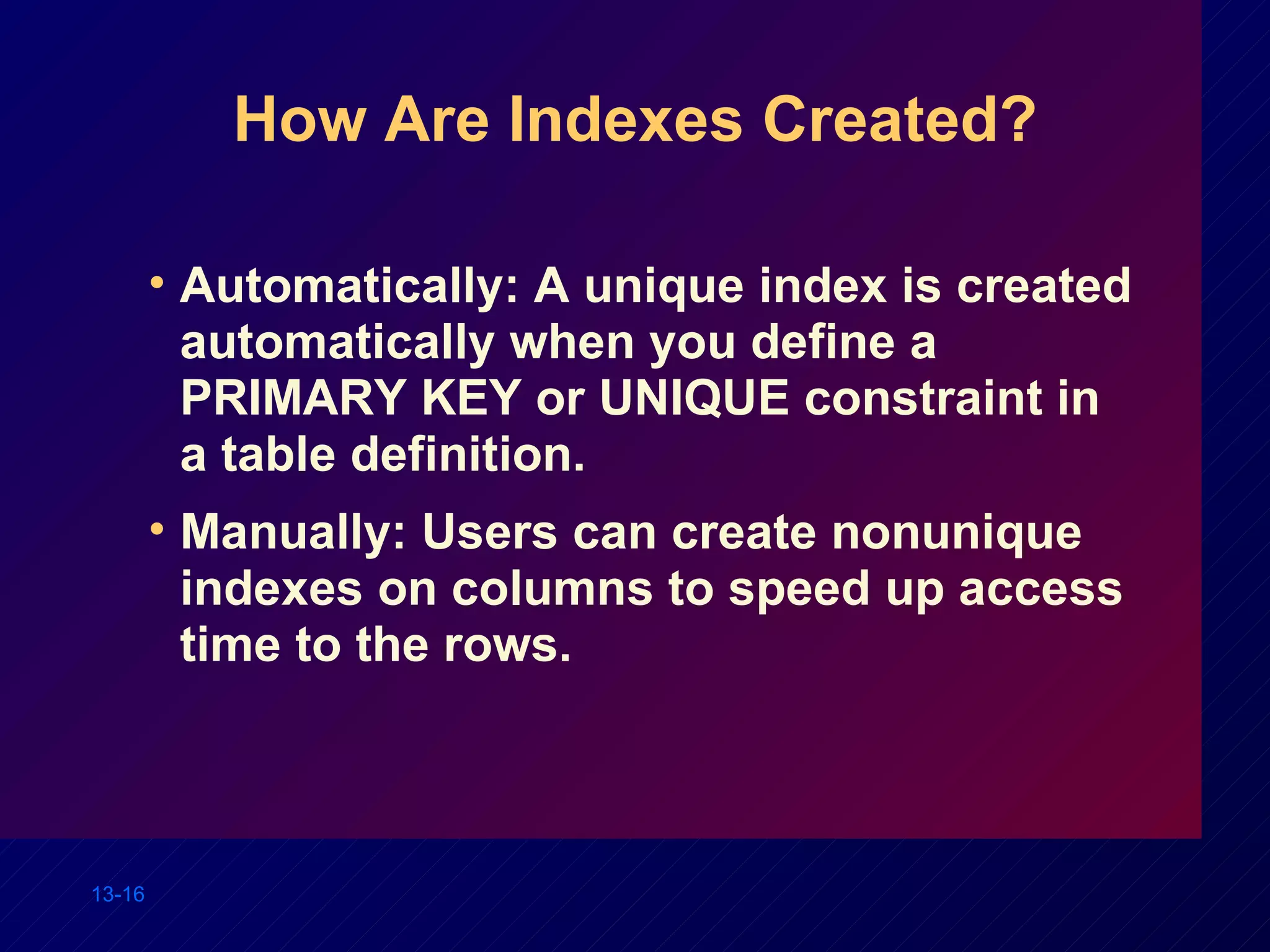
![Creating an Index Improve the speed of query access on the ENAME column in the EMP table. SQL> CREATE INDEX emp_ename_idx 2 ON emp(ename); Index created. CREATE INDEX index ON table ( column [, column ]...); Create an index on one or more columns.](https://image.slidesharecdn.com/les13-111115074311-phpapp02/75/Les13-17-2048.jpg)
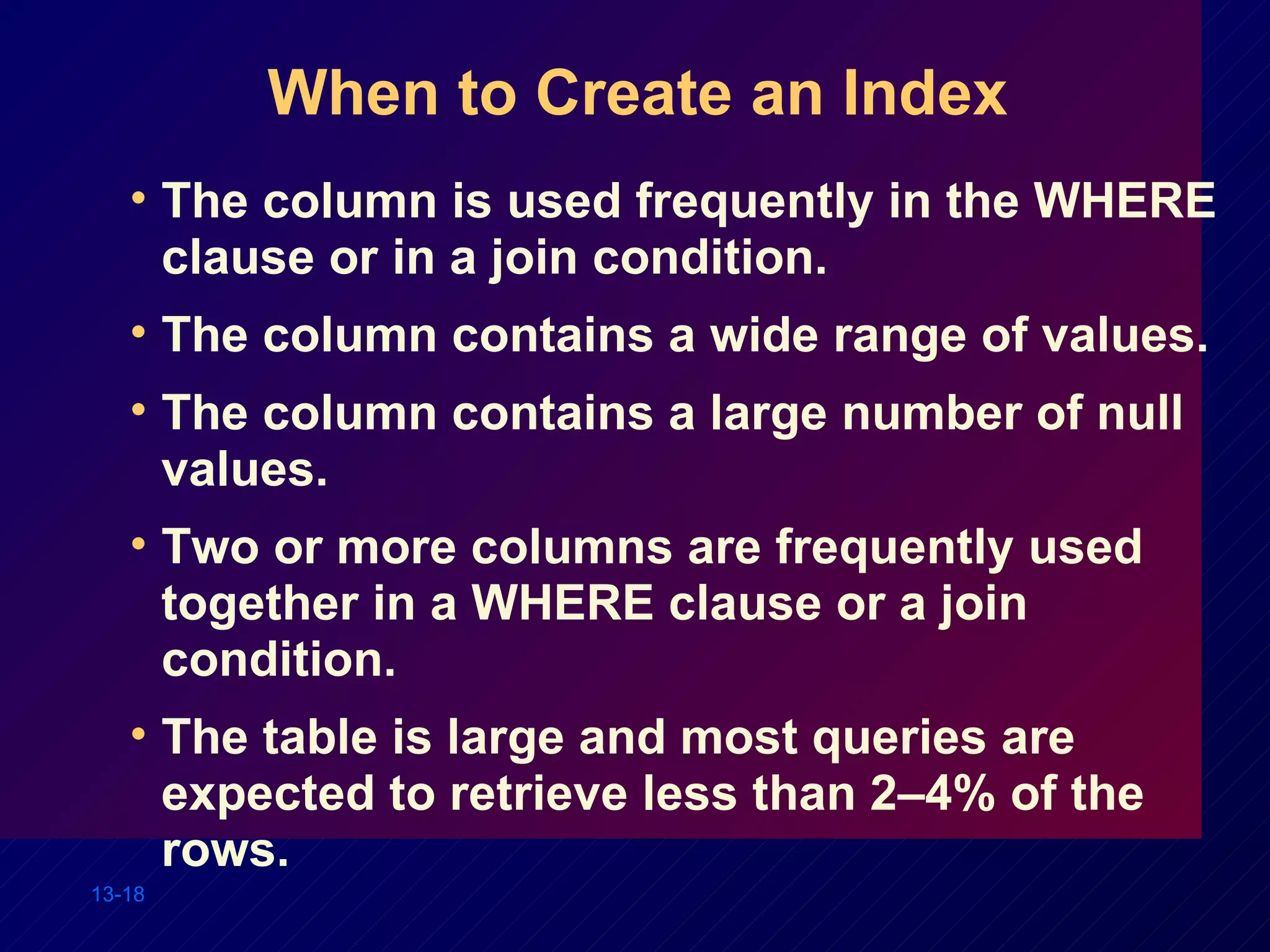
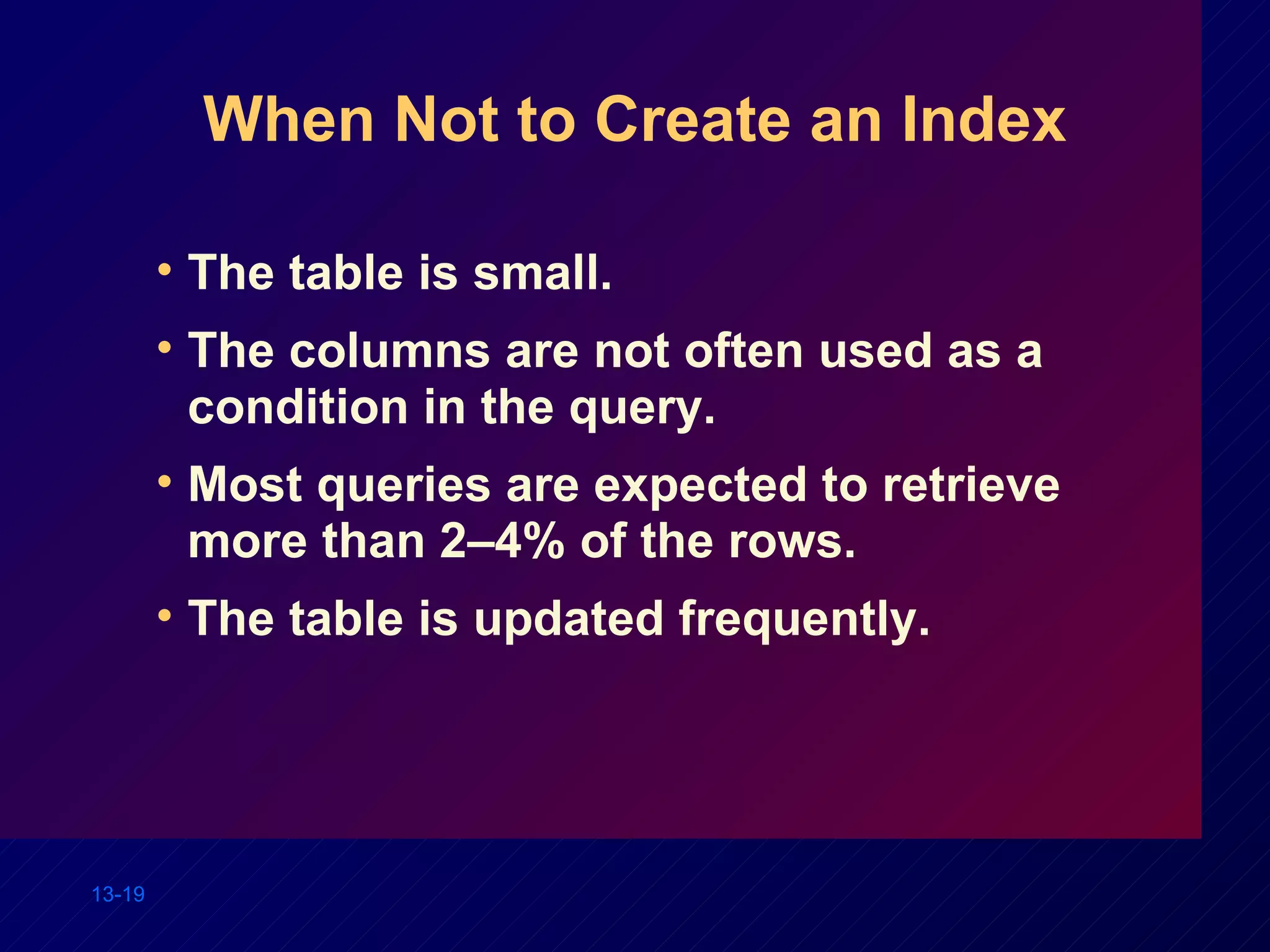


![Synonyms Simplify access to objects by creating a synonym (another name for an object). Refer to a table owned by another user. Shorten lengthy object names. CREATE [PUBLIC] SYNONYM synonym FOR object ;](https://image.slidesharecdn.com/les13-111115074311-phpapp02/75/Les13-22-2048.jpg)


